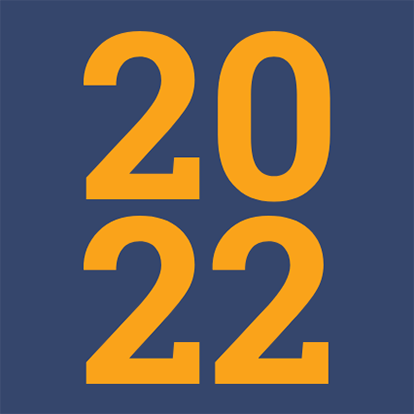Your feedback can help us improve and enhance our services to the public. Tell us what matters to you in our online Customer Satisfaction Survey.

This publication is part of a series of results from Census 2022. More thematic publications will be published throughout 2023 as outlined in the Census 2022 Publication Schedule.
The number of occupied dwellings that were built between 2016 and 2022 was nearly twice as high as the number of homes built between 2011 and 2015.
In South Dublin, Kildare and Meath, more than three times as many occupied dwellings were built between 2016 and 2022 as were built between 2011 and 2015.
The largest absolute difference was in Fingal where the number of dwellings built between 2016 and 2022 was over 6,000 higher than the number built in the 2011 to 2015 period.
More than half of the dwellings built in the six years before the census (46,578) were semi-detached or terraced houses. Only 16,364 semi-detached or terraced houses were built between 2011 and 2015.
Apartments in purpose-built blocks made up a relatively small proportion of the occupied housing stock built prior to 1991. Just 3% of the dwellings built between 1971 and 1980 were apartments. This increased to a peak of over 20% of the occupied housing stock built from 2001 to 2010.
More recently, apartments in purpose-built blocks made up 15% of the dwellings built since the 2016 census.
In previous censuses, there has been a question about the number of rooms in each dwelling and in the 2022 census, this question was expanded to collect data on the number of bedrooms.
Dwellings built in the 1960s, 1970s and 1980s were the least likely to have four rooms or fewer.

Out of the 1,836,728 occupied dwellings recorded in Census 2022, approximately a third were three bedroom households. There were over 655,000 such properties.
Another quarter of occupied of dwellings had four bedrooms and 16% had two bedrooms.
About 6% of dwellings had one bedroom while 8% had five or more bedrooms.
Properties with one or two bedrooms were most common in Dublin City while South Dublin had the highest proportion of three bedroom dwellings (48%).
Galway County had the highest proportion of four bedroom properties and was also the area with the highest share of dwellings with five or more bedrooms.
The persons per room ratio is used in census reports on housing to provide some insight into the relative level of crowding within dwellings.
In Census 2022, there were 58,869 dwellings with more than one person per room.
On the other hand, there were over 860,000 dwellings with less than 0.5 persons per room.
A new question was asked in the 2022 census about the number of working smoke alarms in the household.
There were nearly 72,000 households, 4% of all occupied dwellings, that had no working smoke alarms.
Compared with flats or apartments in purpose-built blocks, detached houses were more than twice as likely to not have a working smoke alarm.
There has been a big shift in the main type of central heating used within dwellings built recently. Historically, oil has been the most common type of fuel used for heating. Dwellings built since 2016 were much more likely to rely on electricity for central heating.
Nearly half of the occupied housing stock built between 2016 and Census 2022 used electricity as the main type of central heating, compared with just 10% of older dwellings built from before 1919 up to 2015.
Oil was much less common in newer properties, 9% compared with 41% of older dwellings.
In total, approximately one in three homes used natural gas to fuel their central heating. This proportion was mirrored among dwellings built since 2016.
Very few new housing properties used solid fuels such as coal, peat or wood and Liquid Petroleum Gas (LPG) was relatively uncommon across all dwellings.
Just over 7% of homes built between 2016 and Census 2022 reported their main type of fuel for central heating as ‘Other’, compared with just 1% of older dwellings. On closer inspection, most of these homes, 5,298 out of 6,537, also reported using an air source heat pump as a form of renewable energy.
The reliance on oil as the main source of fuel for central heating increased with the age of the head of the household.
Nearly 50% of householders aged 65 and over were using oil for central heating in Census 2022.
This dropped steadily with age as younger householders were more likely to live in newer dwellings where electricity was more common than oil for central heating.
A question about the different types of renewable energy sources used by households was asked for the first time in Census 2022. This revealed that just under 1 in 4 households used renewable energy sources.
Wood was by far the most common renewable energy source, used by 246,255 households.
There were 96,343 households using solar panels for water heating while 35,603 households used them for electricity.
Over 71,000 households used heat pumps with 57,198 using air source heat pumps and 13,958 using ground source heat pumps.
Dwellings built between 2016 and the 2022 census were more likely to use renewable energy sources (73%) than older dwellings. In these newer dwellings, solar panels and heat pumps were much more commonly used than wood.

The use of solar panels was reported by 6% of all households, ranging from 3% in Dublin City to 11% in Meath.
Out of the 93,128 dwellings built between 2016 and 2022, over 30% used solar panels; usage rates in these newly built dwellings varied across the country.
Meath (46%), South Dublin (45%) and Fingal (44%) were the counties where solar panel usage was highest in new builds.
In Roscommon (9%), Leitrim (11%) and Kerry (13%), new builds were much less likely to use solar energy.
The question on internet connectivity was expanded in Census 2022. Part of it asked about the different devices in the household that are connected to the internet. This replaced the previous census question which asked if the household had a personal computer (PC).
Over 1.2 million households, 66% of the occupied dwellings, had a fixed broadband connection.
A mobile broadband connection was recorded for over 347,000 households, 19% of occupied homes. This figure includes some 107,000 households that also had fixed broadband.
Households having a fixed broadband connection or a mobile one or both made up a total of 1.46 million dwellings or 79% of all occupied homes.
There were almost 68,500 households that had a satellite internet connection and over 27,000 with ‘Other’ type of connection.
In total, 1.53 million households, 83% of occupied dwellings, had an internet connection.
There was a clear difference in internet connectivity by age of the householder. In 20% of the dwellings headed by someone aged 65 and over, there was no internet connection of any kind.
The proportion of dwellings with no internet connection was almost 34% where the head of the household was aged 65 and over and living alone.
Among households headed by someone aged between 60 and 64 years, the proportion of dwellings without internet connectivity was 10%.
Households headed by someone aged between 30 and 44 years were least likely to not have internet connectivity, at just 3%.
In the 2011 and 2016 censuses, a question was asked on whether a household had a personal computer (PC). In 2011, 73% of households answered yes and this fell to 68% in 2016. In Census 2022, the question on internet connectivity was expanded, asking about the different devices in the household that were connected to the internet.
Just 26% of households with an internet connection used a desktop PC compared with 69% who used a laptop.
Mobile phones were the type of device most often used to access the internet and were used by 87% of households, while 51% used tablets.
Smart TVs were used by 59% of households with internet and 28% had video consoles that accessed the internet.
Explore census data from county level to neighbourhood (Small Area) level
Learn about our data and confidentiality safeguards, and the steps we take to produce statistics that can be trusted by all.